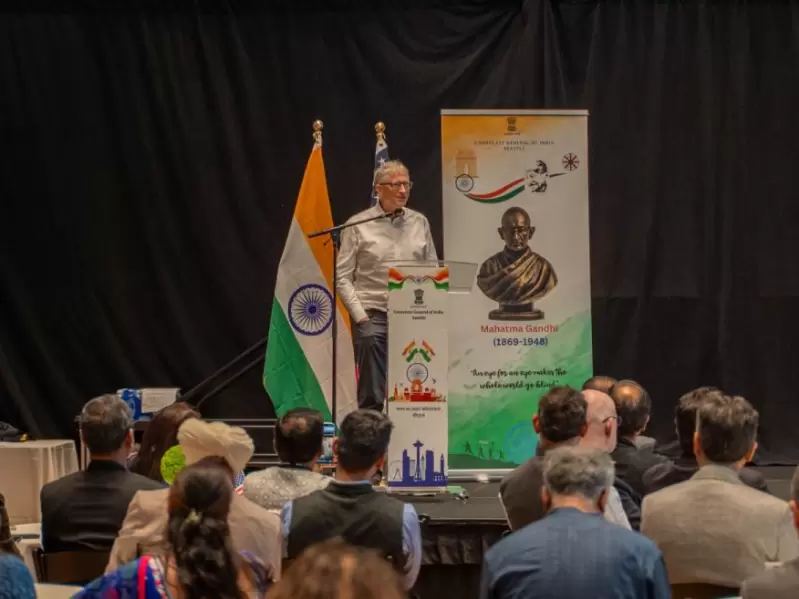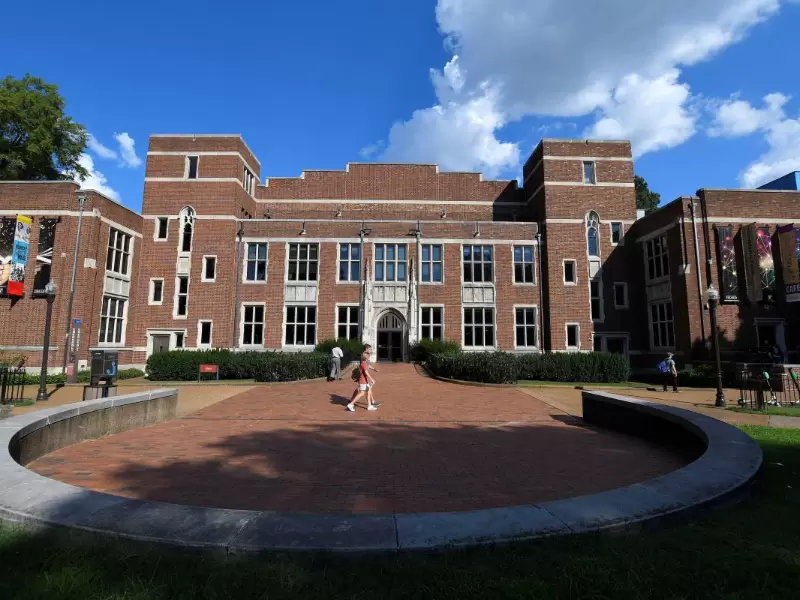A History of Bias: Who Gets Deported in the United States?
The very first immigration ban that Congress ever adopted was the 1803 Immigration Act which targeted Negro, free persons of color.
.jpg) RepresentativeImage / Image: Wikipedia
RepresentativeImage / Image: Wikipedia
A History of Bias: Who Gets Deported in the United States?
Three scholars from UCLA’s Center for Immigration Law and Policy and the Million Dollar Hoods Project have spent five years compiling and analyzing deportation data. Their work offers unprecedented context on the roots and realities of U.S. deportation policy, tracing its evolution to1895. The result is a publicly accessible, searchable archive that uses maps and visualizations to reveal the policies and patterns that have shaped deportations over more than a century.
“I knew as a historian that there had been more than 50 million deportation orders in U.S. history, which is a mind-boggling number, " said Kelly Lytle Hernández, Thomas E. Lifka Endowed Chair in History at UCLA, and founding director of Million Dollar Hoods, at a briefing organized by American Community Media. The website has been 5 years in the making.
“No one had really scraped the data,” she said. This is a big data project called Million Dollar Hoods, which maps the fiscal and human costs of mass incarceration.
The data painstakingly gathered and organized by Mariah Tso, G.I.S. Specialist Million Dollar Hoods at UCLA creates a dynamic map showing over time the patterns of deportation.The historical timeline is organized into five major eras. “The map starts in 1895 which is the earliest year that we have deportation order data by country or region,” explained the scholars.
This is a map of every single deportation order from 1895 to 2022.
Race in Immigration
“Prior to 1934, authorities used race or people; after that, it was a country of nationality, and every once in a while, country of destination.”
Indian immigrants were granted naturalization under U.S. law by being classified as members of the “Caucasian race.” But that foundation collapsed in 1923, when the U.S. Supreme Court decided United States v. Bhagat Singh Thind. Thind, a Sikh man and U.S. Army veteran who had fought for the United States in World War I, petitioned for citizenship on the grounds that Indians were anthropologically Caucasian and was shocked at its denial.
The British had pressured the U.S. government to restrict naturalization of people of Indian origin due to concerns about Indian immigrants undermining British colonial rule in India.
The very first immigration ban that Congress ever adopted was the 1803 Immigration Act which targeted Negro, free persons of color. The idea at this point in time, in 1803, was that if free Blacks entered a slave state their very presence would incite or inspire rebellion among the enslaved. Free Black was banned entry by states. Southern slavers talked about Black emancipation as a moral contagion.
In the case of Bhagat Singh Saund The Court noted that "Congress, by the Act of February 5, 1917, 39 Stat. 874, c. 29, § 3, has now excluded from admission into this country all natives of Asia within designated limits of latitude and longitude, including the whole of India," suggesting its intention that natives of India also be excluded from eligibility for naturalized citizenship.
Racism was baked into the immigration system over time dating all the way back to the antebellum period, said Ahilan Arulanantham, Faculty Co-Director, the Center for Immigration Law and Policy (CILP) at the UCLA School of Law.
“People working in the field, federal public defenders from San Diego among them, had uncovered that the law of Criminal prohibition on illegal reentry, was motivated by race discrimination. It was passed in 1929 at the height of the eugenics movement,” said Arulanantham.
“I was struck by how stark some of the race discrimination was in immigration policy, even during the Biden administration. Just to give one example, the application of the Title 42 program excluding people from the country on the basis of COVID was applied very harshly to Haitians and to other people from Central America. And then, just like that virtually all Ukrainians were exempt from the program,” he said.
It is about white domination
“So we dub this the Whites-only immigration system,” said the scholars.
“I don't use the whites-only system as a literal term, and that's because it's never been literal. It rarely stopped all Black and non-white immigration or movement into a building or an area. Backdoors and side gates always remained open to Black and non-white workers, janitors, nannies, laundresses, landscapers but in a subordinated position.
“So Jim Crow was less about the separation of the races, and it was more about the rules and the rituals of white supremacy. It's the construction of a new form of federal power, and how it applies to immigrants.”
Brignoni-Ponce decision from the Supreme Court in 1975 said it's legitimate to use race as a factor of immigration law enforcement.
“This is the ruling that the Supreme Court effectively held up a couple of weeks ago, when it allowed ICE and Customs and Border Patrol to continue using race as a factor in their operations here in Los Angeles and elsewhere in the Ninth Circuit.”
Deportation Nation
Since 1991, the United States federal government has built the largest immigrant detention and deportation system in the world conducting more than 7 million deportations during this time period and issuing more than 25 million voluntary departure orders. In fact, the racial disparities in deportation get worse in this period, due to the tightening relationship between the U.S. criminal legal system and the immigration system, effectively making mass deportation a component of mass incarceration.
Deportation data tells the story
The data tells some of the other stories about enforcement tactics that are used and contexts and dimensions that are helpful to tell this story. The study has 15 visuals.
The bar chart on the side shows the top 5 most deportation orders for each year using the original categories by federal authorities. The drop-down menu on the side looks up specific years.
“You can see how things change over time, how they shift, who is racialized and how, who is criminalized, who is banned, barred, and capped.”
Said Kelly Lytle Hernández, “I would say that, for me, as a historian, what is happening now is simply an escalation, what was a system that's already been pre-built and in place. There's nothing phenomenally new to all of this. President Trump hasn't invented much. He is pulling the levers that were already built.”




 Ritu Marwah
Ritu Marwah 
















Comments
Start the conversation
Become a member of New India Abroad to start commenting.
Sign Up Now
Already have an account? Login